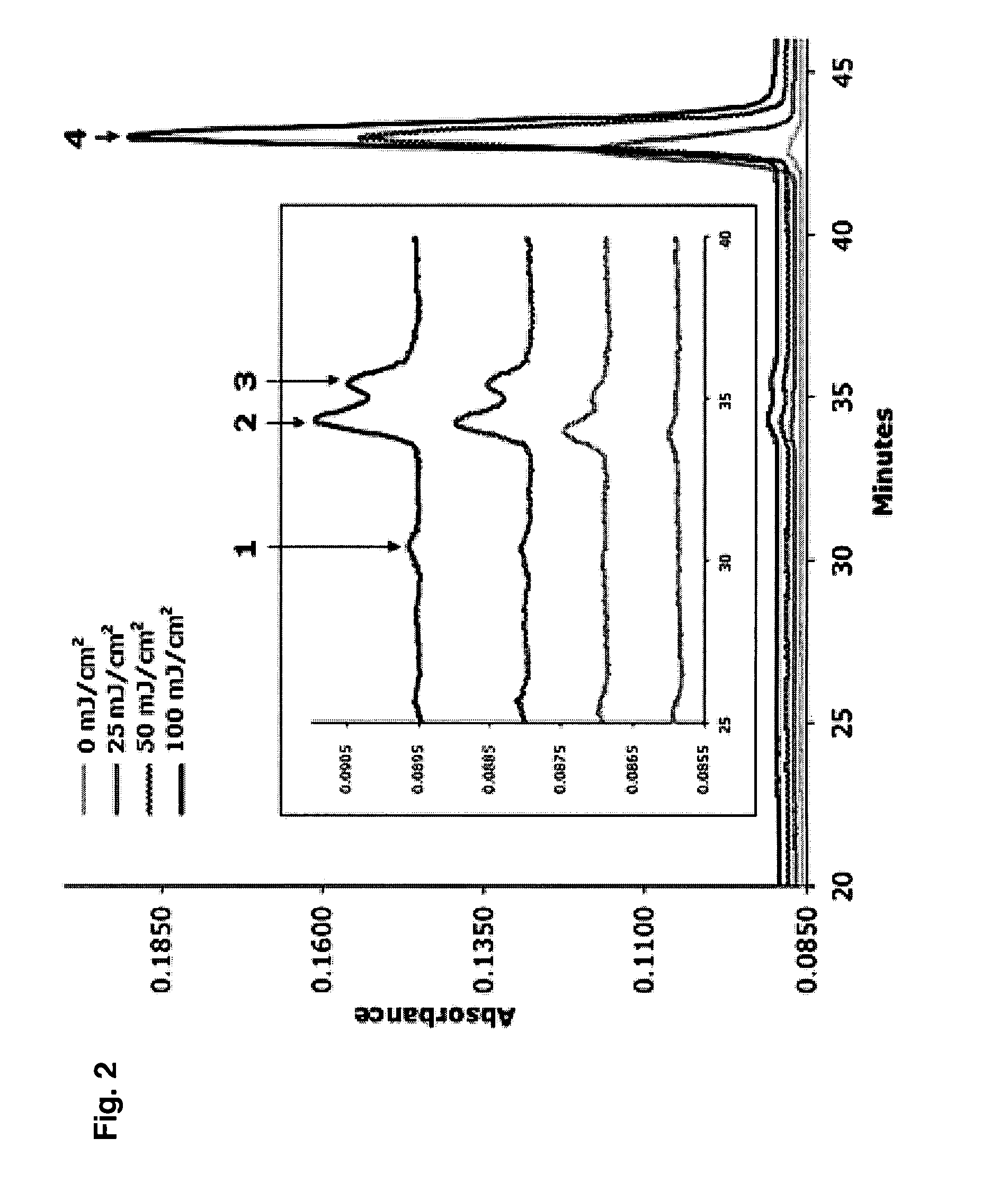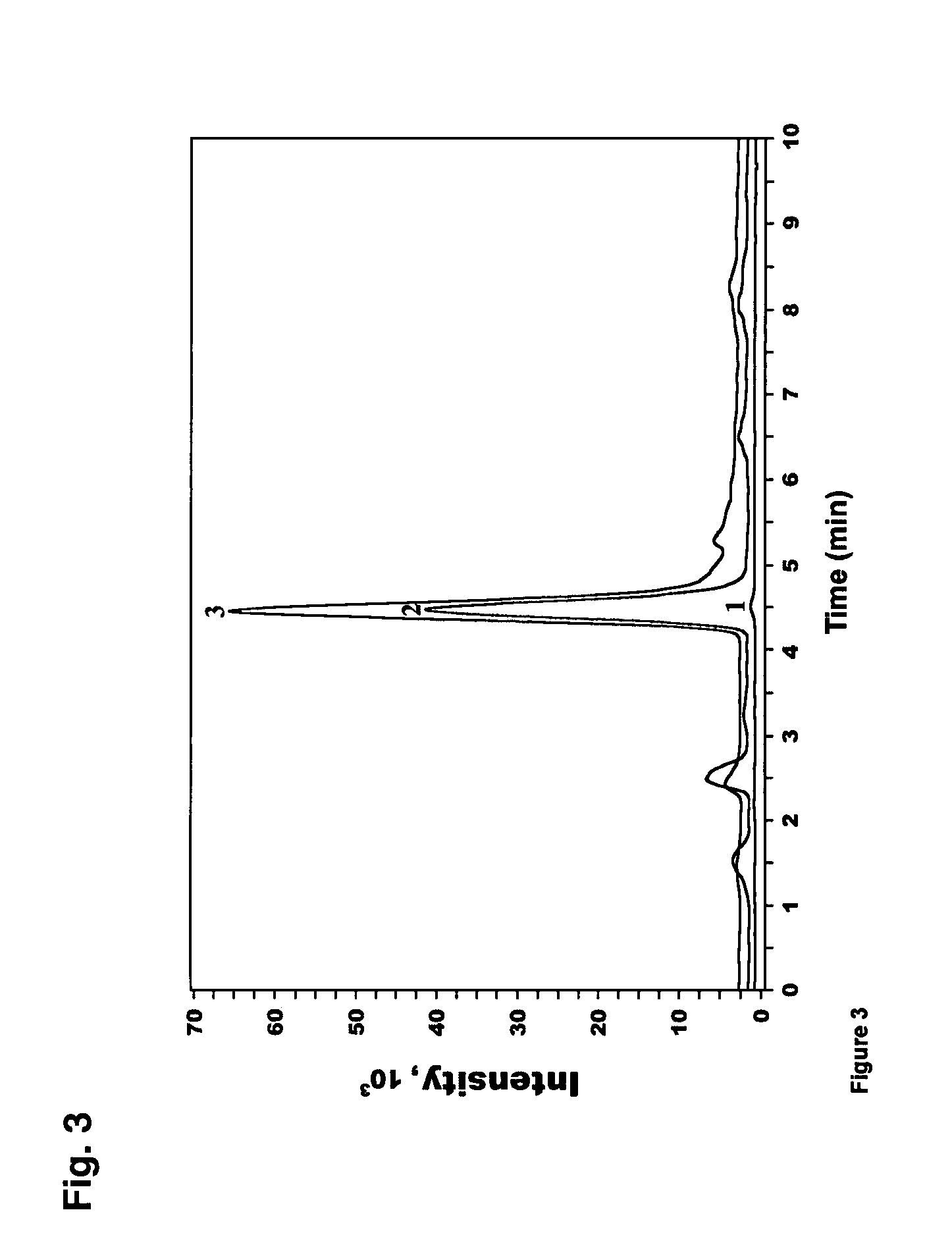Uses of melatonin in skin
a technology of melatonin and skin, applied in the field of skin care, can solve the problems of lack of knowledge and unexplored current art, and achieve the effect of preventing the reduction of mitochondrial membrane potential
- Summary
- Abstract
- Description
- Claims
- Application Information
AI Technical Summary
Benefits of technology
Problems solved by technology
Method used
Image
Examples
example 1
Cell Culture
[0049] HaCaT keratinocytes were cultivated in Dulbecco's Modified Eagle Medium (DMEM) supplemented with glucose, L-glutamine, pyridoxine hydrochloride (Gibco, Invitrogen Life Technologies Carlsbad, Calif.), 10% fetal bovine serum (Mediatech Inc., Herndon, Va.) and 1% penicillin / streptomycin / amphotericin antibiotic solution (Sigma Chemical Co., St. Louis, Mo.). Cells were trypsinized from culture flasks and seeded in 10 cm petri dishes (Corning Inc., Corning, N.Y.) at a density of 106 cells / dish and incubated overnight. The next day, after confluence of 80-90% was reached, cells were washed once with PBS to remove remnants of media, and incubation with melatonin in PBS was performed for 30 min. Parallel control dishes were incubated with PBS without melatonin. After incubation the Petri dishes were irradiated from below with UVR. For the investigation of melatonin uptake and metabolism, keratinocytes were incubated with melatonin for 30 min or 24 hrs; endogenous melaton...
example 2
Melatonin and HPLC Standards
[0050] Melatonin was purchased from Sigma Chemical Co. (St. Louis, Mo.) and dissolved in absolute ethanol and further diluted with PBS (final concentration of ethanol −3 and 10−6 M for a 30 min or 24 hrs incubation. Internal standards for HPLC were dissolved in absolute ethanol. These included AFMK, 6-hydroxymelatonin (6-OH-Mel), 5-methoxytryptamine (5-MT), 5-methoxy-3-indol acetic acid (5-MIAA) and 5-methoxytryptophol (5-MTphol). All reagents, except for AFMK, were purchased from Sigma Chemical Co. (St. Louis, Mo.). AFMK was produced as described previously (48). AFMK was then purified by HPLC and its identity confirmed by UV spectra (at λmax=231, 262 and 342 nm) and verified by the mass spectrometry (findings of molecular ion [M+H]+ at m / z 265 and fragment ions at m / z 237 ([(M-N-acetyl)+H]+) and m / z 178 ([(M-(N-acetyl+N-formyl))+H]+).
example 3
UV Irradiation
[0051] Irradiation experiments were performed with a Biorad UV transluminator 2000 (Bio-RAD Laboratories, Hercules, Calif.), calibrated as described previously (37). Briefly, a scanning double monochromator spectroradiometer (Model OL 754, Optronic Laboratories, Orlando, Fla.) was used to scan emission of wavelengths from 250 to 800 nm at 1 nm increments. The spectroradiometer had been calibrated with an NIST traceable tungsten-halogen spectral irradiance standard (Model 75-10E, Optronic Laboratories, Orlando, Fla.) with a precision current source (Model 65, Optronic Laboratories, Orlando, Fla.). An additional calibration module (Model 752-150, Optronic Laboratories, Orlando, Fla.) measured both photometric gain and wavelength accuracy. Wavelength calibration and gain were established or verified before each experimental use. The UV source emission (shown in FIG. 1) consisted primarily of UVB light (wavelength 280-320 nm; 60%), with minor output in the UVA (320-400 n...
PUM
| Property | Measurement | Unit |
|---|---|---|
| Concentration | aaaaa | aaaaa |
| Biological properties | aaaaa | aaaaa |
| Membrane potential | aaaaa | aaaaa |
Abstract
Description
Claims
Application Information
 Login to View More
Login to View More - R&D
- Intellectual Property
- Life Sciences
- Materials
- Tech Scout
- Unparalleled Data Quality
- Higher Quality Content
- 60% Fewer Hallucinations
Browse by: Latest US Patents, China's latest patents, Technical Efficacy Thesaurus, Application Domain, Technology Topic, Popular Technical Reports.
© 2025 PatSnap. All rights reserved.Legal|Privacy policy|Modern Slavery Act Transparency Statement|Sitemap|About US| Contact US: help@patsnap.com



